homemade secrets
Case Study | Integrated Design & Marketing
— is a platform to shine a light on the not so glamorous life of being a Gen Z parent, and bring together a community of Gen Z parents to feel better connected to one another.

Role
Digital Designer
UX Researcher
Visual Identity
Installation Designer
Team
Valerie E. Lianggara (myself)
Skills
Installation Design
Digital Marketing
Visual Design
Art Direction
Design Thinking
Tools
Adobe Illustrator
Adobe Photoshop
Timeline
October - November 2020
The Challenge
The Playful Enquiry brief required us to explore the relationship
between strategy and audience with a spirit of
enquiry and play. We were asked to work with
three core elements: a strategy, target audience
and a message we wanted to communicate.
My chosen strategy and target audience was
‘EMBARRASS’ and ‘YOUNG PARENTS’ (generated by a randomizer). Therefore, the challenge was to create a solution that young parents go through with an embarrassing strategy.
The Solution
With the stigma around young parents rising, I feel like my approach to this brief was to find a way to let them know that they’re not alone. I wanted to create a solution that acts as a
light-hearted approach to the potentially negative experiences they face. To bring humor, passive aggression, and wit into an issue that young
parents suffer with, with the goal of building a community of young
parents to support one another and relate to.
Hence, the
message I want to communicate is for them to
feel better connected with one another through
relatable stories they experience through a child’s
perspective.
MARKET RESEARCH
Understanding the approach
As a starting point, I conducted some market research to understand my audience and strategy: how young is a young parent? What is the difference between embarrass and guilt/shame? Some key points I gathered from some secondary research are:
The term ‘young parents’ is used to denote anyone aged 13-25 years old who is expecting a child or has a child.
Young parents of today are all Gen Zs. Gen Z parents will succeed in becoming great parents due to their experiences about social issues and being more open-minded. They are more exposed to the world through the easy access of the internet, one of the main outlets being Buzzfeed - where I gained access to an article regarding embarrassing, relatable mistakes that parents make.
The stigma against young parents & teen pregnancy: stereotyped as having a negative connotation, and the risks and shame that comes with being a young parent is heavily pointed out.
Due to this, majority of them experience psychological and social challenges, in addition to the lack of community and added pressure from today’s world of social media.
The only somewhat reliable community-type platform forum is on Reddit, where teen/young parents can express what they go through and exchange advices.
USER RESEARCH
Understanding our users
Because I do not personally resonate with this problem and I do not fall into my target group category, I conducted user research by Instagram polls and Google Forms, which respectively led to qualitative and quantitative research.

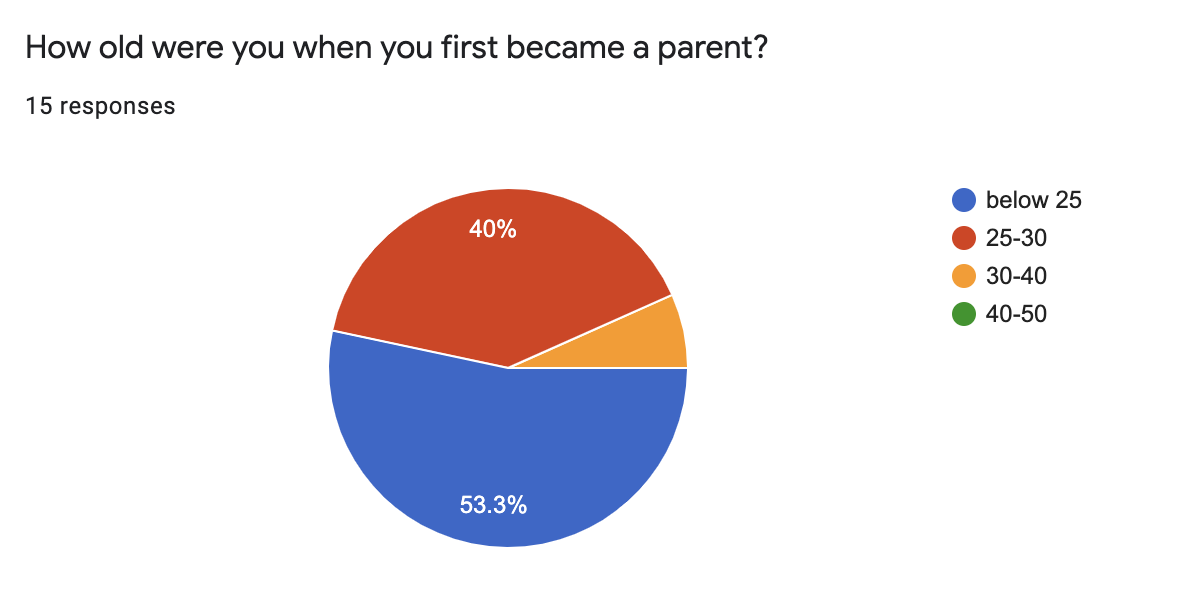

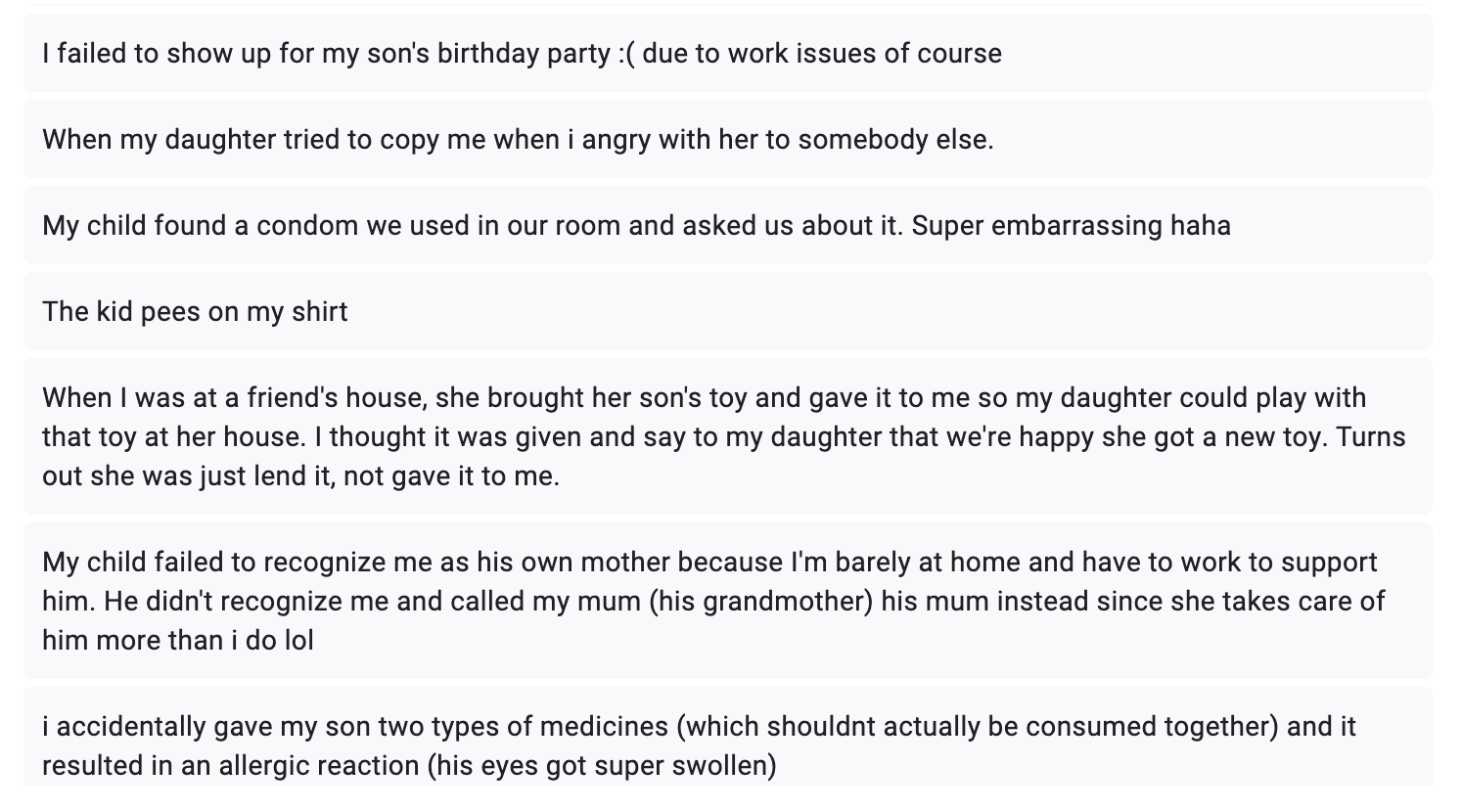
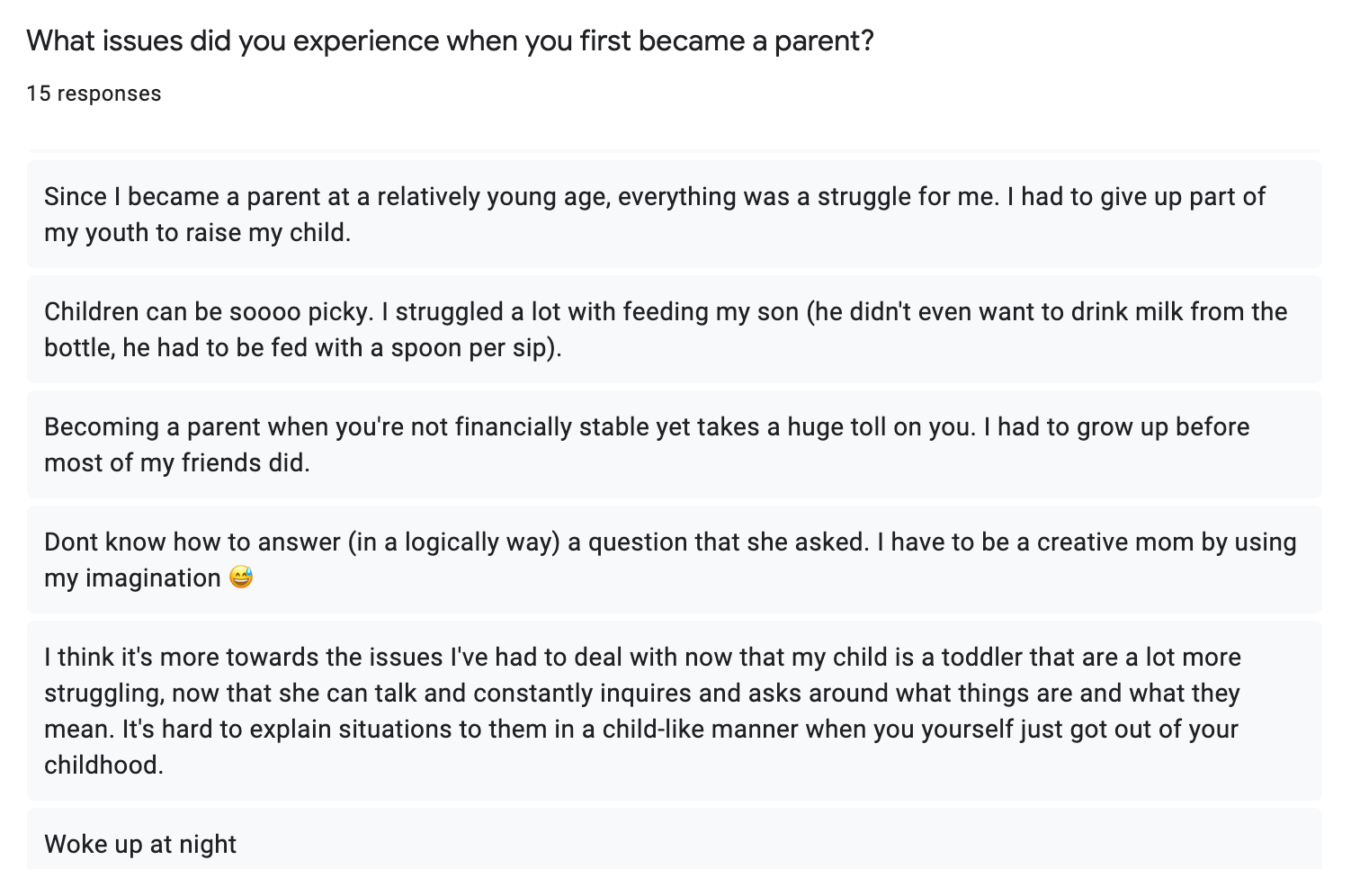
From the data collected, I was able to create two user personas: Giselle Huang and Francis Lam.

Giselle Huang
Giselle is a 20 year old single mom and university student. She has a 3 year old daughter who she takes care of full-time, resulting in her choice to take classes online and at night. Because of this, Giselle does not have much of a social life and cannot find anyone who is struggling to balance her life the same way she is.

Francis Lam
Francis is a 23 year old dad and an entry-level software engineer. As a fresh graduate and a full-time dad, he finds it hard to unwind and find someone to relate to, to resonate with his personal struggles and journey as a young parent. During his spare time, Francis loves to go on TikTok and Instagram, where he connects with his friends and entertain himself despite his busy schedule.
BRAINSTORMING
Design References Analysis
As a way to gain insights into the ideation process, I looked into examples of innovative designs and did further research on educating children about food. The innovative design references that were explored were: an interactive book called‘How Are You Today?’
by Here Design, an interactive installation
for children in the Galerie
des Enfants space at Centre Pompidou,
designed by Paris-based
studio GGSV and the movie ‘Charlie and The Chocolate Factory’.




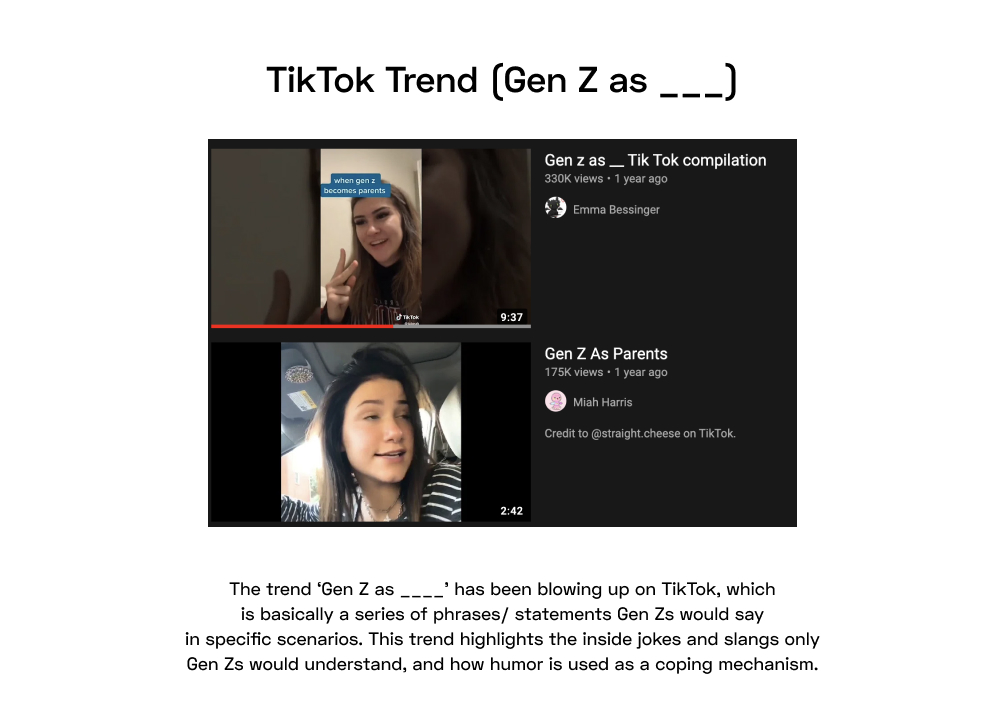
DESIGN
Creating Key Visuals
When conducting user research, I managed to collect a lot of stories that I wanted to translate with a Gen Z appropriate filter to create the key visuals for the social aim of my project.
I constructed
statements regarding these issues and give the
statements a tone of voice that would target Gen
Z’s.
I used a lot of passive aggresion, and some Gen Z inspired slangs (TikTok culture).
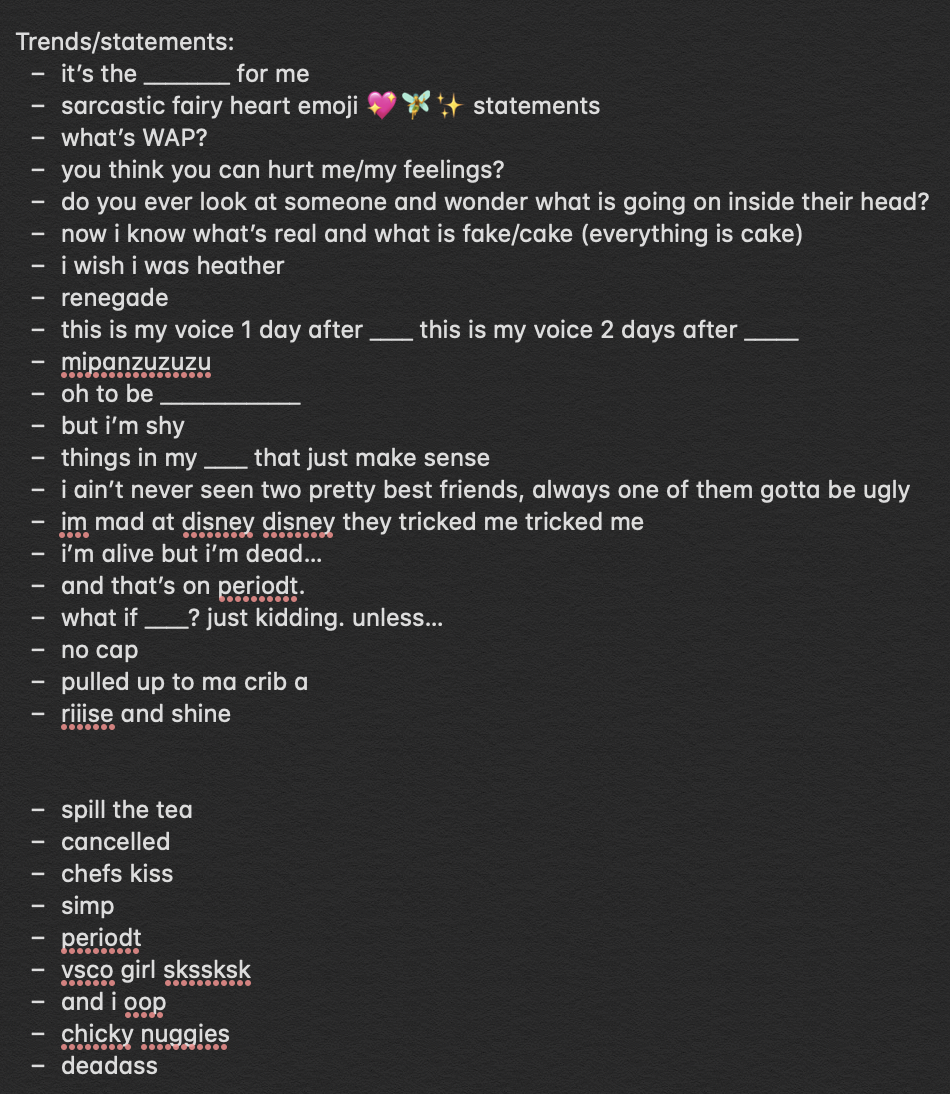
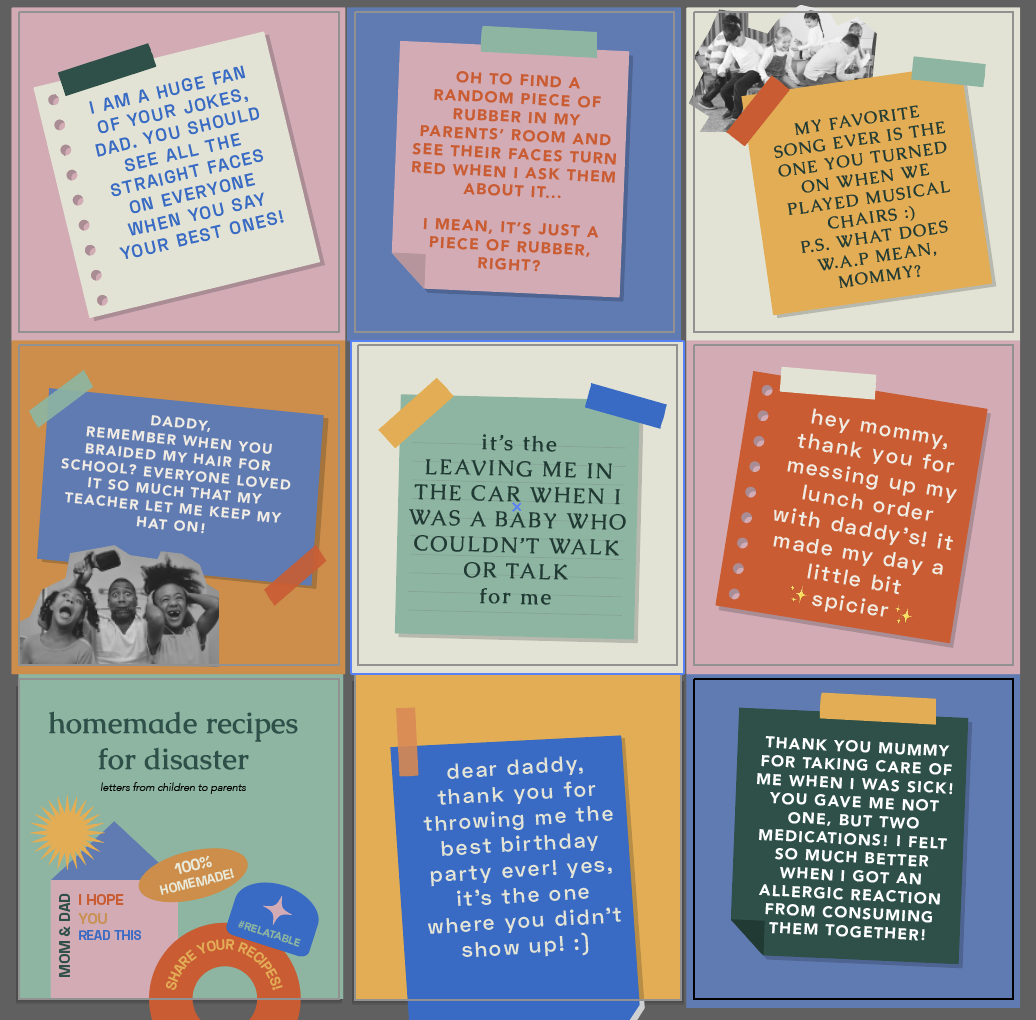
SKETCHES
Visualizing Installation
An element I wanted to implement in my outcome is to project my message on a larger scale. An idea I had was to play with projection, which led me to investigate a project called ‘House I Grew Up In’ where projection is used to transform an ordinary house to a magical experience. However, the feedback I got felt like it was implying for me to not do that since the idea of ‘bringing conversations inside of the house to the outside of the house’ might be too strong of a statement/idea that it might be overbearing.
Despite that, although I believe that producing a publication and social media campaigns are strong enough outcomes, I would still like to explore the installation idea. A peer of mine mentioned how his concern is that it could be deemed as shameful instead of embarrassing, but I feel like since I am not projecting direct, real-life arguments but more so statements of a play of words with the established visual language being a very light-hearted & gen-z centric tone, I don’t think it’s shameful. It’s a contradiction of the common phrase ‘what happens inside, stays inside’, which I personally feel like adds another dimension and solidifies my project in regard to the topic of embarrassment. Through this, I sketched out how I envisioned the installation to look like:
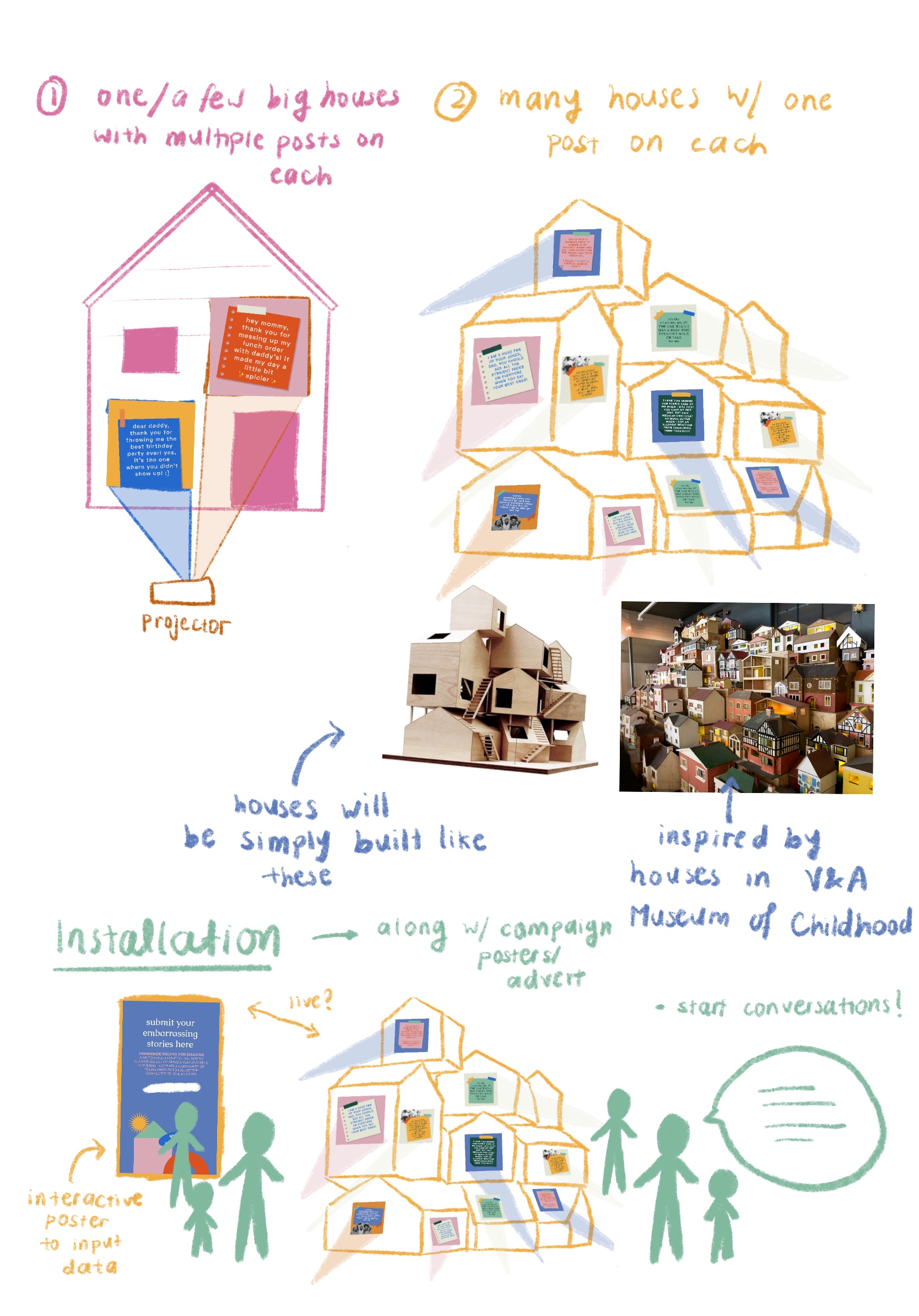
DIGITAL MARKETING
Advertisment Material
Along
side the Instagram account, I wanted to further
promote the cause by crossing medias on other social
media platforms, hence the Facebook and Twitter
Ads. I created a poster advert as well, which can be
displayed in offline public places, and along side the
installation as well.
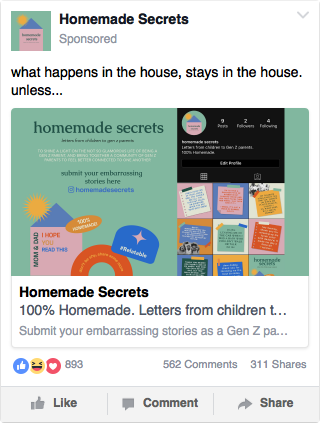

Twitter (left) & Facebook (right) Ads
PROTOTYPING
Building Houses
Since I did not have the resources of
creating a lifesized installation, especially
during the pandemic, I settled on creating
miniature paper houses instead. I created templates on Photoshop in a range of sizes and colours and printed them out on paper.
I then proceeded
to stick tiny print outs of the statements on the houses, as I didn’t have the
opportunity to project them onto the houses. It
was a fun process for me as it reminded me of arts and crafts in kindergarten.
Creating a miniature live version of the installation allowed me to envision
what it would look like in a real-life context. Although a scaled down version,
it still served its purpose effectively.
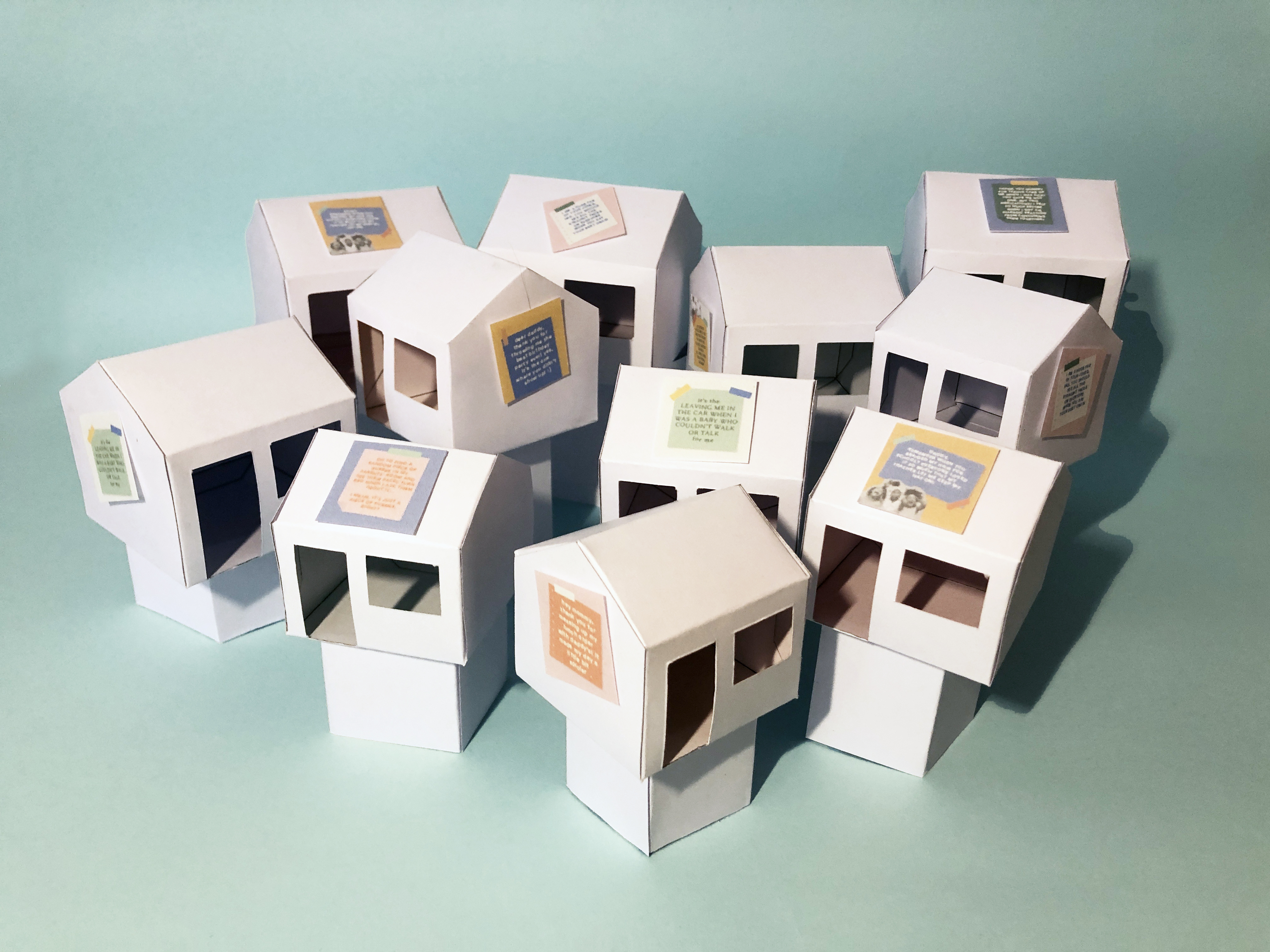
Final Outcome
Homemade Secrets aims to shine a light on the not so glamorous life of being a
Gen Z parent through relatable and embarrassing stories they all face. The message is to use humor and sarcasm to
embarrass young parents through the daily experiences they have to go through
with their kids, and encourage them to start a conversation with each other and
build a community of their own.
My
project’s final outcome includes an Instagram page, an installation, and a
book. The Instagram page is the main outlet of where these young
parents can come together and see other parents’ embarrassing moments, and
the installation is to further emphasize how ‘embarrass’ them on a larger scale.
Inspired by the Chinese phrase 家丑不可外扬 (meaning ‘keep the family problems
inside the house’), the installation involves a projection of these messages onto
houses to portray the irony of how these stories/issues happen inside the house,
I want to project them OUTSIDE of the house. The book is a proposed idea of a potential annual giftbook, inspired by the concept of a coffee table book. It will contain a collection of best posts each year, that can act as a gift to a gen Z parent.

